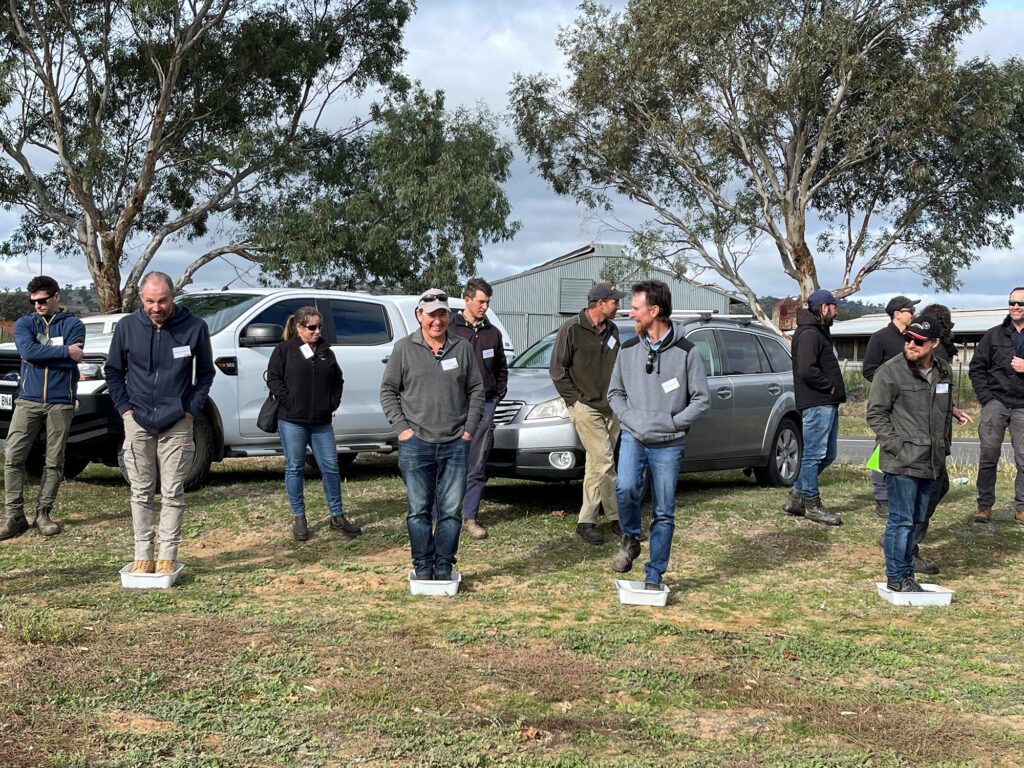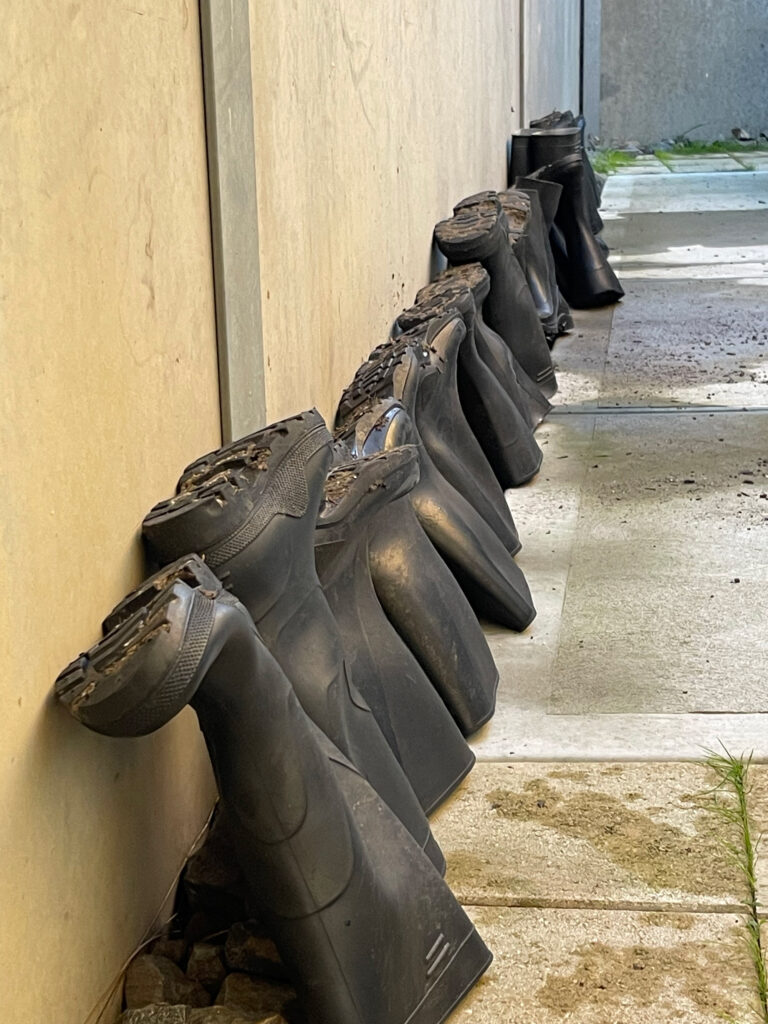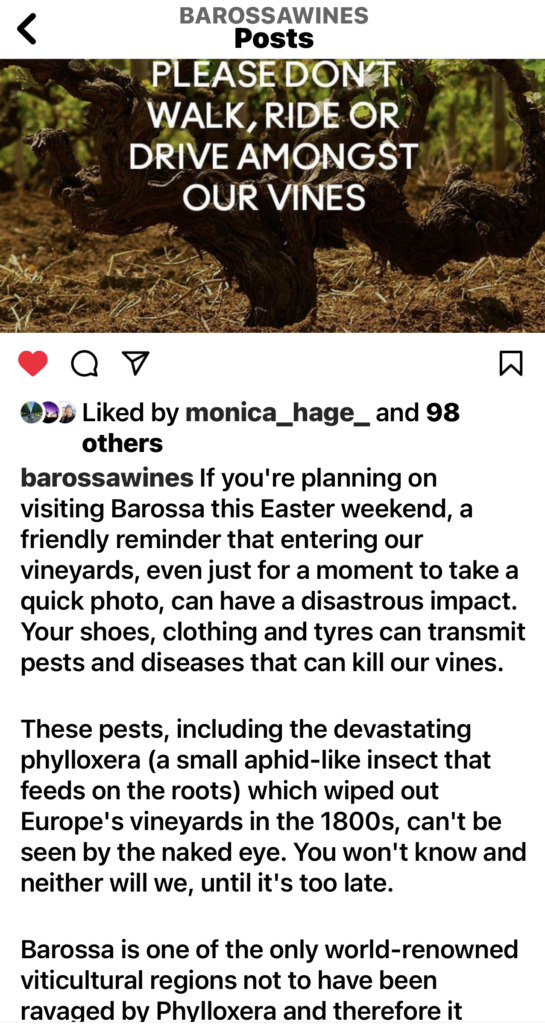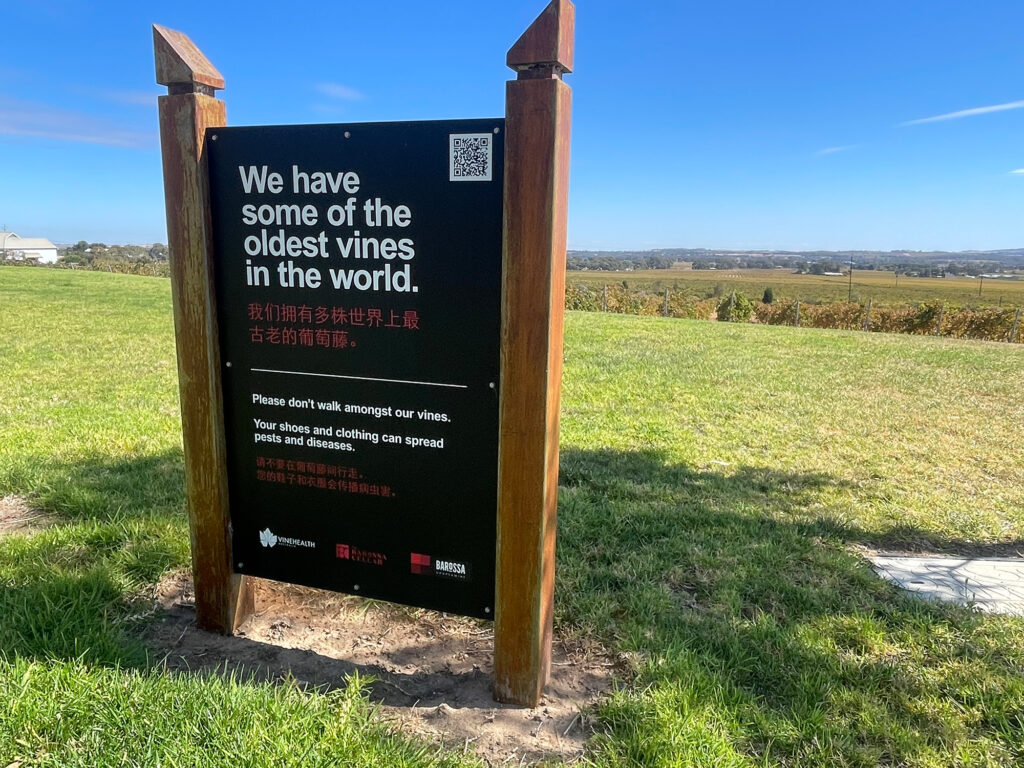Protection of heritage vines is at the core of Barossa’s strong biosecurity focus, which includes wine tourism biosecurity signs, footbaths and social media campaigns.
“We have the oldest continually producing Shiraz, Mourvèdre, Grenache and Semillon vineyards in the world, dating back to 1843, so phylloxera prevention is more top of mind because you can’t replant an old vineyard,” said Barossa Australia Viticultural Development Manager Nicki Robins.
“We are very aware that if phylloxera did come here and we had to replant vineyards, we’d lose these precious old vine resources. It would be a huge loss for our region because old vines are a big part of our wine story.”
Nicki said wine tourism biosecurity signage had been erected at many cellar doors and vineyards around the Barossa, and in public spaces such as the Barossa bike path. “And at the Barossa Cellar Heritage Vineyard, which attracts many international visitors, we have signage, footbath kits and visitor sign-in sheets,” she said.
“When we run regional events such as workshops, we try to set an example to growers by having footbaths at the entry to vineyards, and we hope vineyard owners will follow suit.”
Footbaths were set up for the 2022 Barossa Growers Soil Health Field Day, which was attended by 80 growers. “We had 10 footbaths at the entry of all four of the vineyards entered on the day, so we could get 80 people through in eight minutes, at 60 seconds per person in each footbath,” Nicki said.

“We’ve also set up footbaths at the registration desk at the Barossa Pruning Expo in 2015, 2017, 2019 and 2023. This regularly attracts around 150 participants – growers, viticultural suppliers and pruners from other regions such as the Clare Valley and McLaren Vale.
“And we have dozens of pairs of gumboots at The Barossa Cellar for guests to slip into when walking in the Shiraz heritage vineyard, which contains vines from cuttings from iconic vineyards.”

Nicki has also worked with Barossa wineries on their farm-gate hygiene activities, including Seppeltsfield who have instigated footbaths for visitors doing their Segway Tour and Great Terraced Vineyard Tour experiences.
Barossa Australia shares regular messages about wine tourism biosecurity on its social media channels, particularly Instagram.

“We did Vinehealth Australia’s Wine Tourism Biosecurity Training Program several years ago and since then we’ve been much more active on digital media asking tourists to keep out of our vineyards,” Nicki said.
“That program was empowering for the regions. Before that, I didn’t know whether I could tell people to keep out of the vineyards. Our mindset is quite different now as we’ve realised it’s our job to educate visitors.”
Nicki said several Barossa cellar doors have set up platforms for tourists to use to take spectacular photos of their vineyards, without entering the vineyards. “We’re all more aware now that tourists want to take selfies, so we need to make it easy and safe for them to do that,” she said.
Barossa Australia has also been involved with phylloxera outbreak simulation exercises with Vinehealth Australia in the past.
“The simulations have been really useful in terms of understanding what an outbreak would mean for our region, and how disruptive it would be to our operations,” Nicki said.
“I think the most illuminating thing from those simulation exercises was the number of contractors that go onto vineyard properties. In 12 months, we counted more than 20 different contractors that would visit a typical vineyard. Each contractor’s biosecurity risk needs to be managed.
“And it’s fantastic having the Vinehealth Register as a resource because we could contact every grower in the region in the event of an outbreak, whereas other states can’t do that because they don’t have Vinehealth or a Register.”
